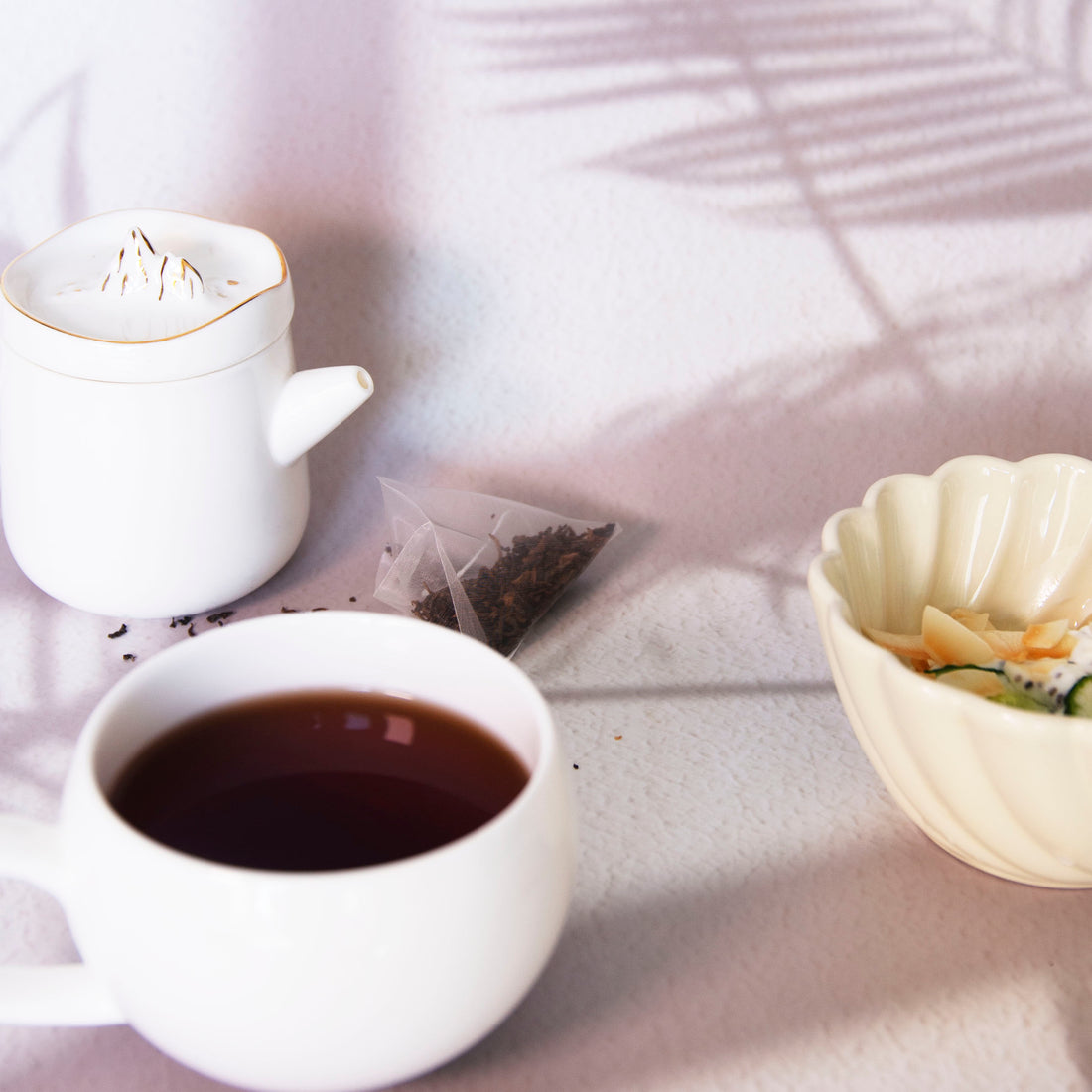
What is Pu’er Tea? A Beginner’s Guide
Share
Pu’er tea is a unique type of fermented tea from Yunnan, China, cherished for its complex flavor and health benefits. Known for its ability to age and improve over time, Pu’er has gained popularity worldwide, especially in the United States, where it is celebrated as a digestive aid and wellness drink. Once so valuable that it was traded like a commodity in China, Pu’er continues to captivate tea lovers and collectors alike.
Whether you’re new to Chinese teas or exploring Pu’er for the first time, this guide covers its history, types, health benefits, and how to brew it.
What is Pu’er Tea?
Pu’er tea belongs to the dark tea category (Hei Cha) and is made from the Camellia sinensis var. assamica variety, i.e. the large -leaf tea trees of Yunnan. Unlike most teas, Pu’er undergoes fermentation, giving it a distinct character that evolves with time. It comes in two main types:
- Raw Pu’er (Sheng): Minimally processed, it ferments naturally over years, offering fresh, grassy flavors.
- Ripe Pu’er (Shou): Fully fermented during production, it boasts a rich, earthy, and smooth taste.
Pu’er tea is often compressed into cakes, bricks, or loose-leaf forms, making it a staple in Chinese tea culture and a favorite for collectors.
A Brief History of Pu’er Tea
The story of Pu’er tea begins thousands of years ago in Yunnan, China. Historical records from later Chinese dynasties reference tea cultivation in the Zhou dynasty era (1046–256 BCE). Today, Yunnan’s ancient tea trees, some over 1,000 years old, remain a symbol of this long-standing tradition.
Pu’er’s unique compressed forms made it ideal for trade along the famous Tea Horse Road, connecting China with Tibet and beyond. Over centuries, Pu’er evolved into a collectible treasure, with aged varieties becoming highly sought after for their depth of flavor and cultural significance
Raw Pu’er vs. Ripe Pu’er: What’s the Difference?
- Raw Pu’er (Sheng Pu):
- Processing: Minimally processed, similar to green tea, and ferments naturally over time.
- Appearance: Leaves are greenish; brewed tea is light golden-yellow.
- Flavor: Fresh, grassy, floral, with astringency in younger teas.
- Digestive Note: May not suit sensitive stomachs due to its fresh nature.
- Ripe Pu’er (Shou Pu):
- Processing: Undergoes an accelerated fermentation process.
- Appearance: Leaves are dark brown; brewed tea is reddish-brown, like coffee.
- Flavor: Rich, earthy, smooth, with hints of wood and dried fruit.
- Digestive Note: Gentle on the stomach, making it ideal for gut health.
While both Sheng and Shou Pu’er have unique benefits, ripe Pu’er is our preferred choice for its digestive-friendly properties and smooth flavor.
Health Benefits of Pu’er Tea
Pu’er tea offers numerous health benefits, particularly for digestion and overall wellness:
- Digestive Support: Ripe Pu’er’s probiotics aid gut health.
- Metabolism Boost: Regular consumption may support weight management.
- Cholesterol Reduction: Pu’er is known to lower LDL cholesterol levels.
- Stress Relief: Its rich, earthy aroma promotes relaxation.
For sensitive stomachs, start with ripe Pu’er, as raw Pu’er’s freshness may cause discomfort.
How to Brew Pu’er Tea
Brewing Pu’er tea is simple, and proper preparation enhances its flavors:
- Amount: Use 3-5 grams of tea.
- Rinse: Quickly rinse the leaves with hot water to “awaken” them.
-
Steep:
- Raw Pu’er: 85-90°C for 10-20 seconds.
- Ripe Pu’er: 95-100°C for 20-30 seconds.
- Re-steep: Both types can be re-steeped up to 8-10 times. Adjust steeping time as desired.
For a traditional experience, try brewing Pu’er tea in the Kung Fu style using a gaiwan or Yixing teapot.
Tips for Choosing Pu’er Tea
When selecting Pu’er tea:
- Check the Origin: Authentic Pu’er tea comes from Yunnan.
- Inspect the Leaves: Look for whole, unbroken leaves.
- Consider the Type: Choose ripe Pu’er for gut health or raw Pu’er for its evolving complexity.
Ready to experience Pu’er tea? Explore our curated collection of ripe Pu’er teas, crafted for both health and flavor, Ripe Pu'er Teabag.
